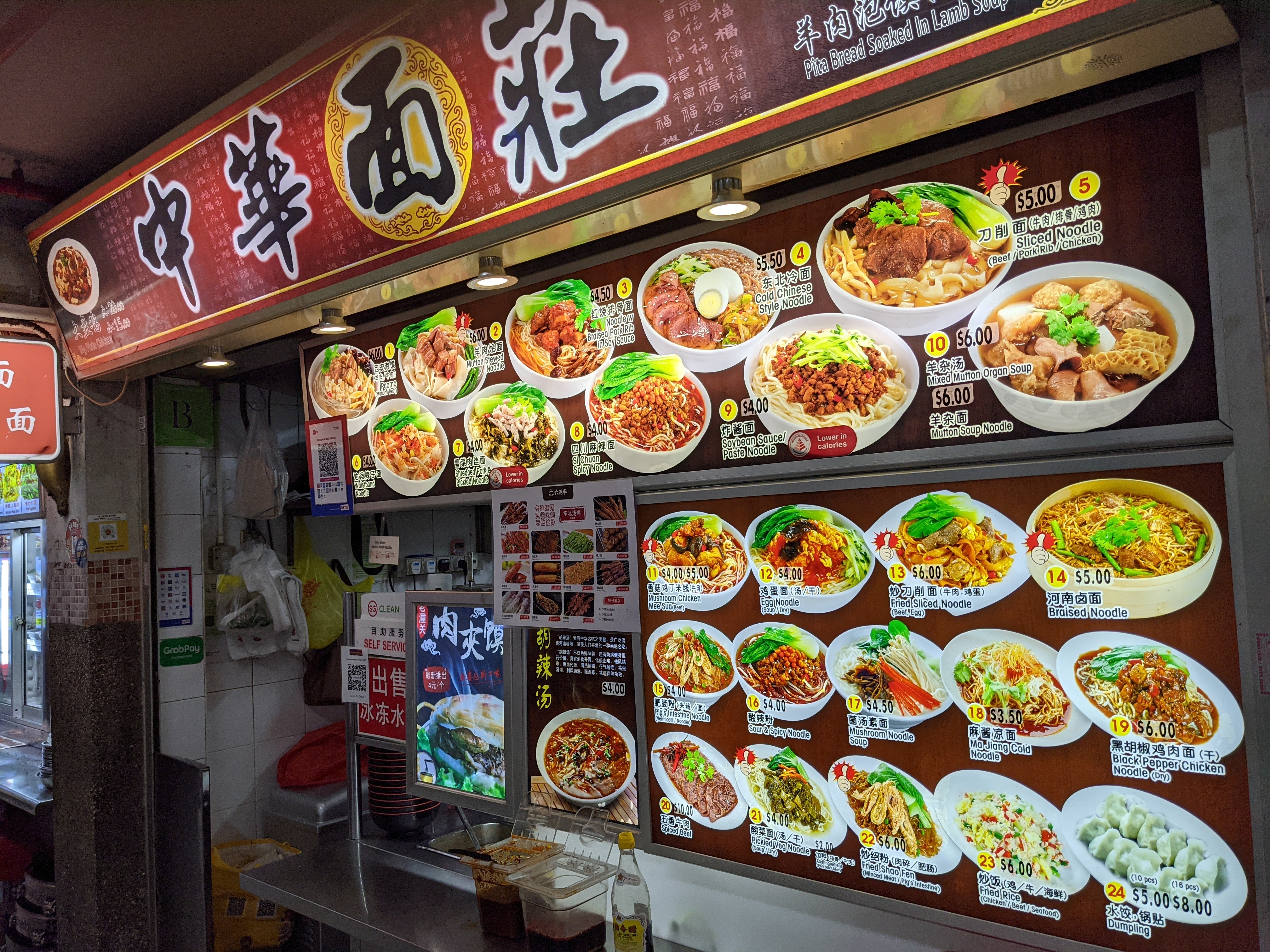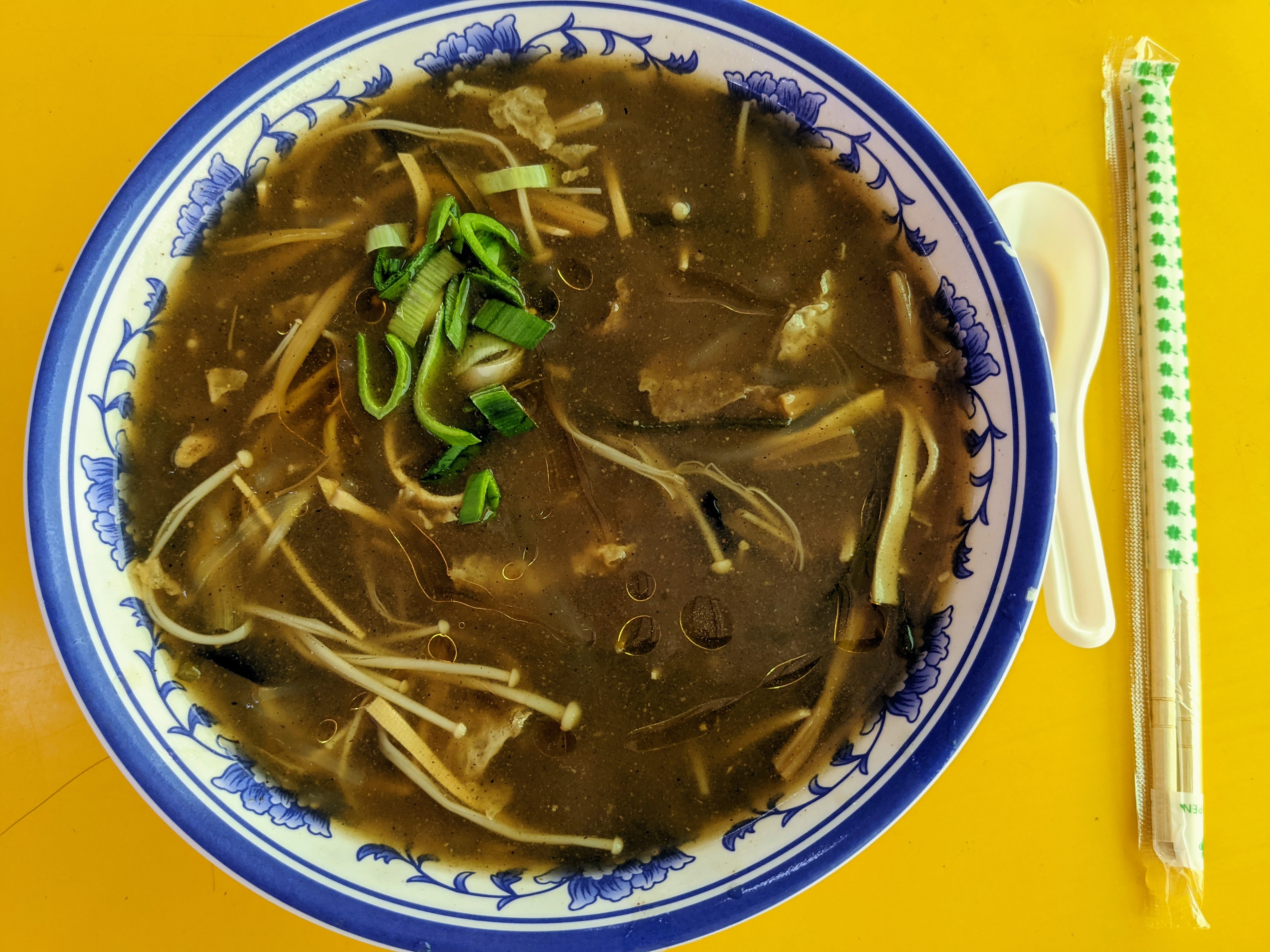Henan, “South of the [Yellow] River”, is probably the biggest place you’ve never heard of. (If you’re thinking Chairman Mao and spicy food, sorry, that’s further south in Hunan with a “u”.) This is frankly surprising, since the area has been inhabited since around 2000 BC, gave birth to China’s first two dynasties the largely mythical Xia and the better attested Shang, and has housed no less than four imperial capitals. Its inhabitants invented Chinese writing, brought Buddhism to the country, and gave us the Shaolin Temple and its martial arts masters. Today’s Henan has a population of 96 million, larger than Turkey or Germany, and its capital Zhengzhou, which you’ve probably also never heard of, has over 10 million people.
Being located at the crossroads of China with people traipsing across for four millennia means that Henan cuisine (豫菜 Yù cài) is rather hard to pin down and the Wikipedia article on the topic is a real mess, even by the low standards of its coverage of regional Chinese food. Just chew on this:
” Henan cuisines focused on the mean and harmony principle, rather than on a single flavor. The spirit of Henan cuisine equals to the spirit of Henan people. It needs to be stated that Henan cuisine one a whole takes the entire approach of mixed cooking and adds significant cultural elements in it. For instance, looking at the geography of the place, Henan cuisine adds the concept of cultural mixing through harmony between the flavours used. […] the culinary style has embraced the nuances and given rise to what the modern Henan cuisine is. Thus, at the core, of its essence, Henan cuisine is as much a culinary form as it is a reflection of the culture and history of the place. “
Helpful innit? Fortunately, my exploration of Henanese cuisine was conviniently curtailed by the fact that, as far as I can tell, there is exactly one (1) restaurant in all of Singapore that offers the stuff.



This shining beacon of Henanity is Zhong Hua Noodle House (中华面荘 Zhōnghuá miàn zhuāng), which as the name hints offers noodles not just from Henan, but all across China. It’s tucked away in the outside row of the People’s Park hawker centre, which over the past 10 years has quietly transformed itself into Mala Central, with what must surely be the heaviest concentration of Sichuanese shops in the country. Located in a sweltering, airless concrete alley without so much as a ceiling fan for a breeze, it’s certainly an effective way to simulate midsummer in Chongqing, and I made the trek here on three separate occasions to find out what Henanese food is all about.
I started off with the Braised Noodle (河南卤面 Hénán lǔmiàn), which is confusingly enough written with exactly the same characters as the completely unrelated Hokkien (Fujianese) dish called lor mee in Singapore, a gloopy dish of thick egg noodles in starchy gravy. By contrast, the traditional preparation of the Henan version involves steaming thin ramen-style noodles, stir-frying them with toppings, then steaming it again. I suspect these guys cut a few corners, since the end result was closer to stir-fried instant noodles with bits of egg, soybeans, and some pork, with zero vegetables but a little star anise to spice it up. Edible, yes; filling, absolutely; exciting, not really.

Second rickshaw off the rank was Mutton Stewed Noodle (羊肉烩面 yángròu huìmiàn), showcasing Henan’s very own noodle style huìmiàn. These hand-pulled noodles, while tasty, are not much different from Gansu lamian, albeit wider and maybe a bit chewier. The real key is the stock: lamb bones are stewed for hours on end until you get a rich, white soup, which is then combined with the noodles, some slivers of fatty, boney stewed mutton, crunchy thin slices of kelp, bonus glass noodles and a sprinkling of Chinese chives. Simple, hearty, and unexpectedly delicious, I can see why this is one of their top sellers.



The ultimate boss challenge, though, was Henan’s most famous dish húlàtāng (胡辣汤), a common breakfast in the region and, if the promotional sign is to be believed, good for all things that ail you, including balancing your qi, removing phlegm and deworming. The Chinese characters mean “pepper spicy soup” and that pretty much sums it up, since it’s a beef broth liberally seasoned with black pepper and chilli powder, with some starch to thicken it up and a splash of vinegar and sesame oil. In the soup lurk a number of half-crunchy, half-gelatinous things: tofu skin, kelp, slivered lily bulbs, enoki mushrooms, sweet potato noodles.
Now I’ll be honest: of all the things I’ve eaten on my quest so far, this was my least favourite. It’s not all that spicy, with the pepper being the predominant taste, yet the chilli powder aftertaste is lingering and a tad bitter. The soup ingredients are all varying degrees of slimy and none have a taste or texture that can stand up to the broth. I can see this hitting the spot on a freezing Zhengzhou morning when you’re on the tail end of a head cold and need a pick-me-up or perhaps a dose of ivermectin, but in Singapore’s eternal summer, not so much.
That brings us to the end — oh, the Henanity! It’s time to hula onwards.